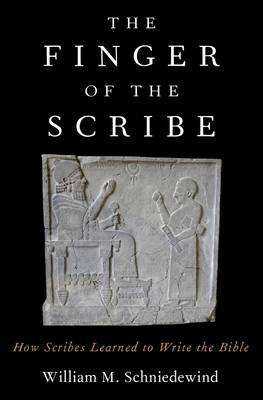
Door een staking bij bpost kan je online bestelling op dit moment iets langer onderweg zijn dan voorzien. Dringend iets nodig? Onze winkels ontvangen jou met open armen!
- Afhalen na 1 uur in een winkel met voorraad
- Gratis thuislevering in België vanaf € 30
- Ruim aanbod met 7 miljoen producten
Door een staking bij bpost kan je online bestelling op dit moment iets langer onderweg zijn dan voorzien. Dringend iets nodig? Onze winkels ontvangen jou met open armen!
- Afhalen na 1 uur in een winkel met voorraad
- Gratis thuislevering in België vanaf € 30
- Ruim aanbod met 7 miljoen producten
Zoeken
Finger of the Scribe
How Scribes Learned to Write the Bible
William M Schniedewind
Hardcover | Engels
€ 67,95
+ 135 punten
Omschrijving
One of the enduring problems in biblical studies is how the Bible came to be written. Clearly, scribes were involved. But our knowledge of scribal training in ancient Israel is limited. William Schniedewind explores the unexpected cache of inscriptions discovered at a remote, Iron Age military post called Kuntillet 'Ajrud to assess the question of how scribes might have been taught to write. Here, far from such urban centers as Jerusalem or Samaria, plaster walls and storage pithoi were littered with inscriptions. Apart from the sensational nature of some of the contents-perhaps suggesting Yahweh had a consort-these inscriptions also reflect actual writing practices among soldiers stationed near the frontier. What emerges is a very different picture of how writing might have been taught, as opposed to the standard view of scribal schools in the main population centers.
Specificaties
Betrokkenen
- Auteur(s):
- Uitgeverij:
Inhoud
- Aantal bladzijden:
- 248
- Taal:
- Engels
Eigenschappen
- Productcode (EAN):
- 9780190052461
- Verschijningsdatum:
- 22/10/2019
- Uitvoering:
- Hardcover
- Formaat:
- Genaaid
- Afmetingen:
- 157 mm x 236 mm
- Gewicht:
- 498 g

Alleen bij Standaard Boekhandel
+ 135 punten op je klantenkaart van Standaard Boekhandel
Beoordelingen
We publiceren alleen reviews die voldoen aan de voorwaarden voor reviews. Bekijk onze voorwaarden voor reviews.











